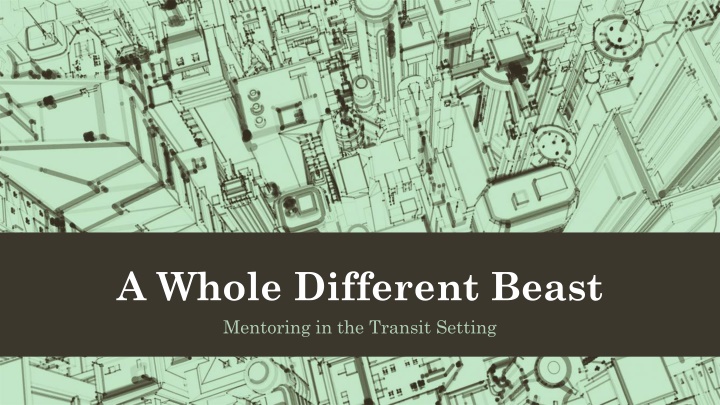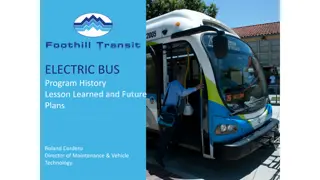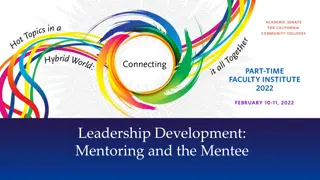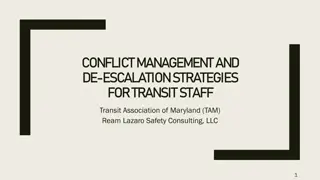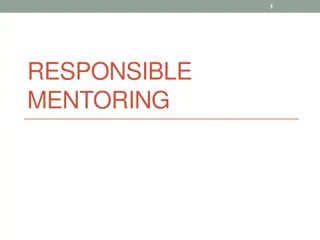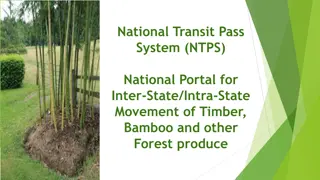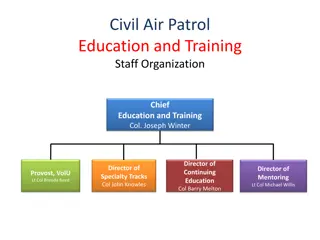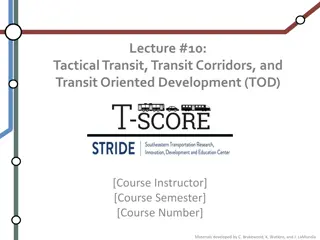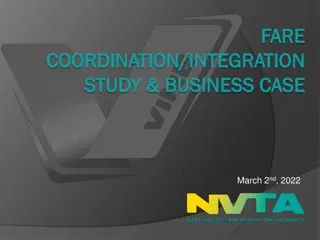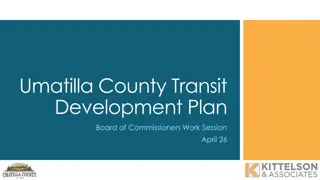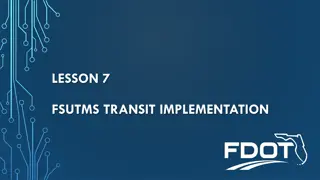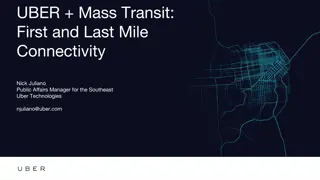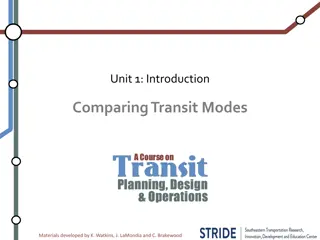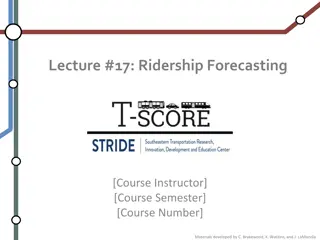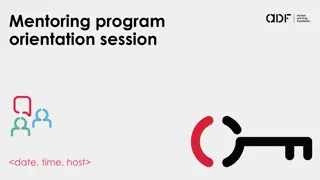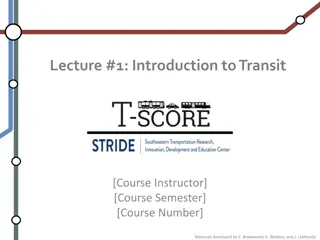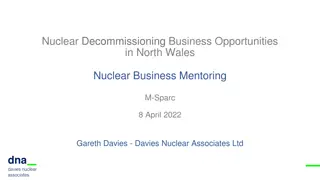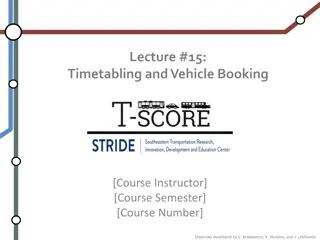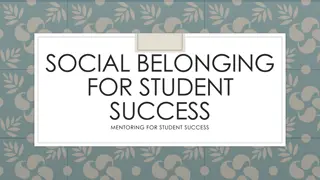Revolutionizing Mentoring in Transit: The B.U.S. Approach
Discover a groundbreaking mentoring initiative in the transit industry - the B.U.S. (Building Up for Success) Mentoring Program. Unveil the evolution of operator mentorship, the inception of B.U.S. mentoring, and the impact on retention metrics. Dive into the development process and explore the current program components reshaping the transit mentoring landscape.
Download Presentation

Please find below an Image/Link to download the presentation.
The content on the website is provided AS IS for your information and personal use only. It may not be sold, licensed, or shared on other websites without obtaining consent from the author.If you encounter any issues during the download, it is possible that the publisher has removed the file from their server.
You are allowed to download the files provided on this website for personal or commercial use, subject to the condition that they are used lawfully. All files are the property of their respective owners.
The content on the website is provided AS IS for your information and personal use only. It may not be sold, licensed, or shared on other websites without obtaining consent from the author.
E N D
Presentation Transcript
A Whole Different Beast Mentoring in the Transit Setting
Key Points Why we started B.U.S. (Building Up for Success) Mentoring How did we develop the program? What B.U.S. Mentoring Program looks like now BUT FIRST
What is Operator Mentorship? All districts actually already have mentorship happening A FORMAL Mentorship Program looks like: Pairing newly graduated Operators with an experienced Operator Mentors are a selected pool of experienced Operators who have gone through training Incorportates ride-alongs and scheduled contact Mentors provide guidance in areas such as: Customer Service De-escalation Techniques Schedule and Work-life Balance
Retention Metrics Before Mentoring August 1, 2021-July 31, 2022 Time Frame Operators Hired 43 Still Employed 23 Retention Rate 53.5%
Current Metrics Since Starting Mentoring Stay Tuned Until the End!
How did we develop the program?
Developing B.U.S. Mentoring Identifying the Problem Researching (and Researching and Researching) Successful Mentoring Programs Applying the Basics of Other Programs Making Adjustments to the Components to Fit into a Transit Setting
What B.U.S. Mentoring Program looks like now
Components of the Program Training the Mentors Effective Communication Critical Listening Skills Adult Learning Styles Self-care and Burnout Pairing Mentors with Mentees at the Point of Line Instruction Extra support while leaving training to the trainers GO TIME!! First day out Full-shift with Mentor Filling out required papers First 10 days Daily Contact Where do you start/end? How are you getting there? Have you gone over your run? Anything happen you need to talk about?
Components of the Program Next 10 Weeks Half-hour of weekly contact Go over routes to increase knowledge Go over 10-codes Go over scheduling and determine if the Mentee is getting adequate hours or is feeling burnt out at all Bi-Weekly Contact Through Month 6 Half hour (one-time or stretched out over the two-weeks) Quizzing on Routes and 10-codes Quizzing on how to respond to emergencies Self-care check-in Monthly Contact Months 7-12 One hour minimum contact (one-time or stretched out over the month Second (possibly final) ride-along during this time Discuss any victories or issues. Debrief and problem-solve if necessary
Components of the Program GRADUATION FROM MENTORING PROGRAM!! $1,000 Bonus to Mentee $500 Bonus to Mentor Graduation Dinner ($100 value per pair)
Current Metrics (The numbers you have been waiting patiently for)
Retention Metrics Before and After Mentoring August 1, 2021-July 31, 2022 August 1, 2022-July 31, 2023 Time Frame Operators Hired 43 60 Still Employed 23 52 Retention Rate 53.5% 86.7%
If you have any questions, please feel free to reach out! Valerie Campo 217-202-6041 or email: vcampo@mtd.org
